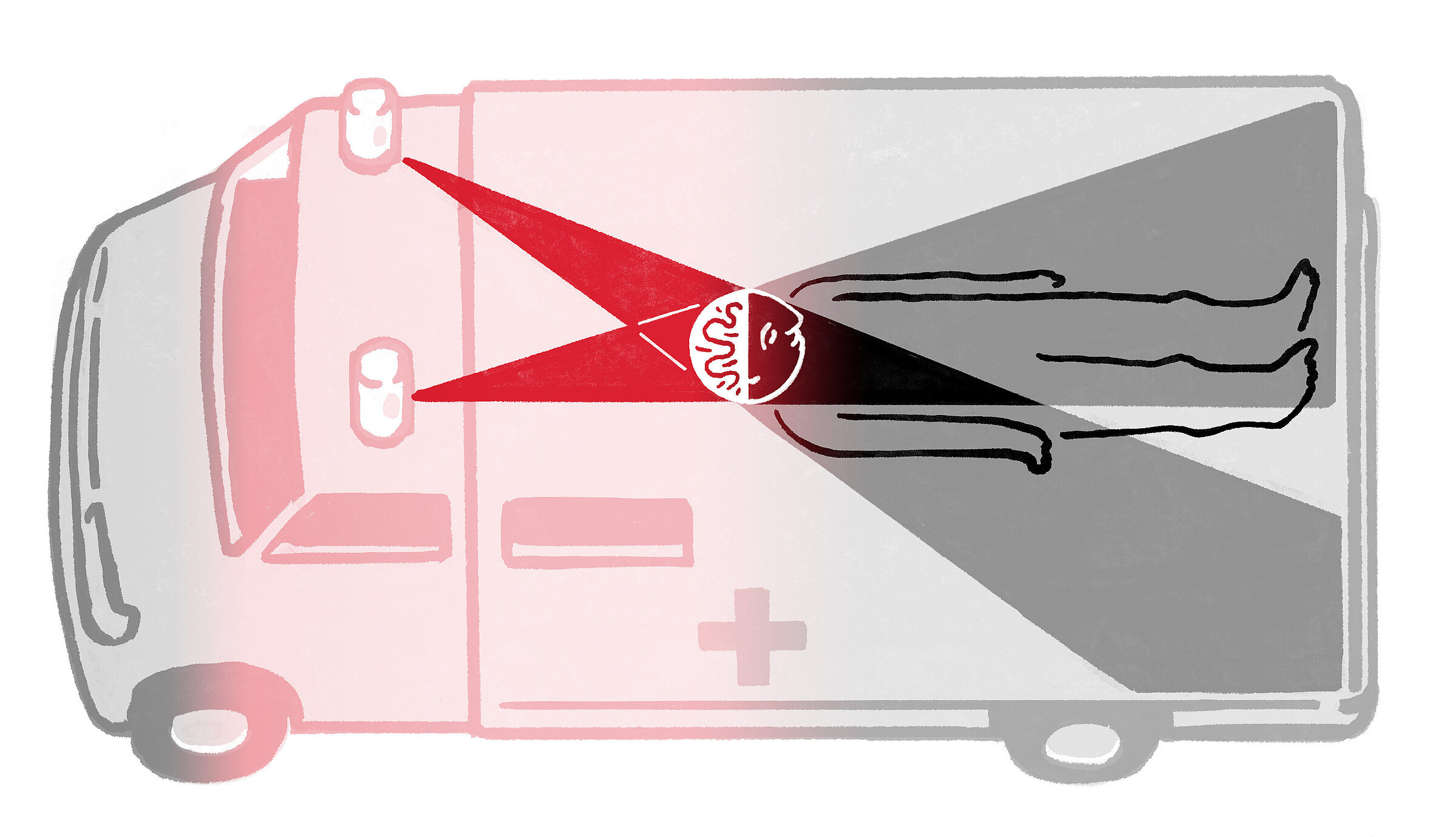During an acute stroke, if untreated, hundreds of millions of brain cells die because the blood flow carrying vital energy is interrupted. Alastair Buchan wants to understand what happens to the cells on the edge of the stroke’s core – and find new ways to bring them back from the penumbra into the light.
Stroke has become a treatable disease in recent years. We have gotten very good with drugs that dissolve clots in arteries, a method called thrombolysis. And even better with thrombectomy – pulling the clot out to reactivate blood flow. When I was in New York in the mid-1980s, I was involved in treating the very first stroke patients with drugs that could dissolve clots. We saw patients who had come in with stroke with blocked cerebral arteries recovering once we restored the flow – something that we’d never seen before. Being able to restart the brain after a stroke was a revolution akin to cardiac resuscitation. For the first time ever, we showed that with rapid intervention we could see the brain tissue survive. But minutes counted.
By 1995 we knew: If you treated people within three hours of symptom onset, the effects were clinically positive, but within two hours we saw twice the benefit, and hyperacute treatment within one hour was optimal. 25 years later, we are still trying to beat this clock. We call it “time is brain”: For every minute delayed, 2 million neurons, 14 billion synapses, and 12 kilometers of myelinated nerve fibers are destroyed. How do we buy more time? How do we save brain?
I am a clinician. I really enjoyed looking after patients and being able to see the miracle of people making a functional recovery. The lab work has been more challenging though. Over many years, I have tried to combine restoration of the blood flow – we call it reperfusion – with drugs that keep the brain cells alive longer and make them more likely to recover. We discovered fundamental cell death mechanisms. But despite many promising approaches and the high quality of the fundamental science, we have failed to translate neuroprotective treatment into effective clinical practice.
My collaboration in Berlin is about studying tissue that does not inevitably die during a stroke but is at high risk. We call that area the penumbra, the half shade. It is a sort of no-man's-land between the core of ischemia, where the blood flow is , interrupted, and the surrounding area which, with reperfusion, is essentially going to recover. Our idea is to make sure that the penumbra moves into the area of recovery, into the light and not into darkness.
For the patient, that can mean everything. For a person who comes in with a left middle cerebral artery stroke, cannot speak, cannot see on the right side, cannot move, or feel the right side of their face, arm or leg, all of that function could be in the penumbra. With timely reperfusion, they can experience a 100 per cent recovery.
I want to understand what happens inside the penumbra during the crucial one to three hours. How can we maximize the chances of cells recovering, reconnecting, re-energizing, and recovering their behavior? We are improving imaging methods to monitor different cell types and mechanisms in real time during a stroke within cell culture, organoids, and the living brain, and while applying drugs or neuroprotective strategies like slowing the metabolism or dropping the temperature. Hypothermic neuroprotection is very effective. It is perhaps one reason why we are more likely to be born at night headfirst: The head cools off very rapidly, the level of glucose is low and there is less inflammatory response. We try to take advantage of such evolutionary adaptations. If we are successful in understanding and rescuing the penumbra into the light, that could help keep cells alive in other neurodegenerative diseases like Alzheimer’s or motor neurone disease as well.
I like to look into the more philosophical questions of biology. Why has evolution come up with the mechanism of killing cells in the first place and what can we learn from that? Ultimately, resuscitating the cells in the penumbra could also change the way we define death itself.


